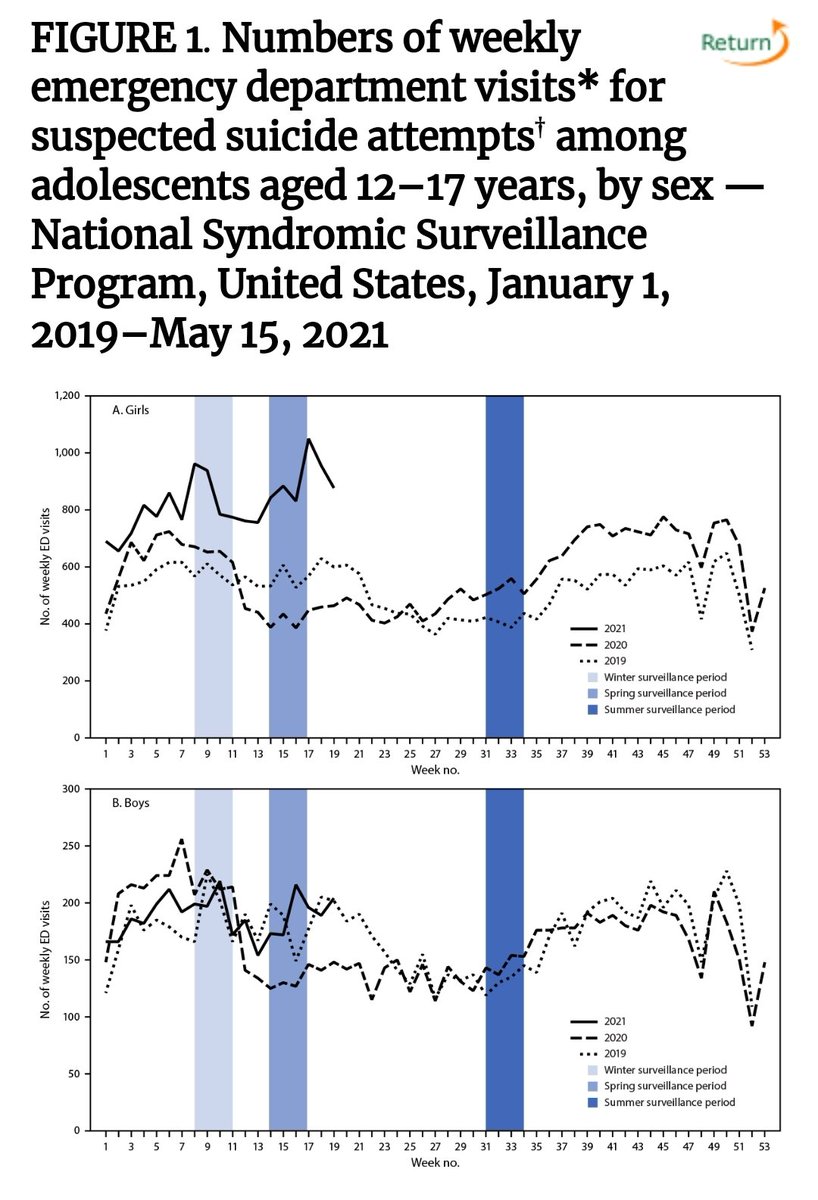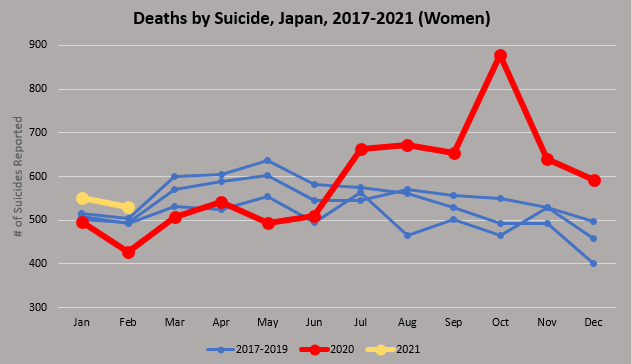
Thread:
The CDC made a large mistake in their recent publication. It took data from "nonsuicidal self injury" and "suicide attempts" and combined them to create a metric "suspected suicide attempts."
This is stigmatizing and wrong. I will explain why.
The CDC made a large mistake in their recent publication. It took data from "nonsuicidal self injury" and "suicide attempts" and combined them to create a metric "suspected suicide attempts."
This is stigmatizing and wrong. I will explain why.
https://twitter.com/CDCMMWR/status/1403384138175033346?s=19
Non-suicidal self injury is a phenomenon that happens in adolescence at a high rate. About 12 to 20% of adolescents and young adults engage in non-suicidal self-injury yearly.
It is **not** suicidal. It differs from suicide in many ways.
/2
It is **not** suicidal. It differs from suicide in many ways.
/2

Non-suicidal self-injury (NSSI):
* Is recruited for therapeutic purpose
* usually involves superficial injuries that do not threaten life
* usually provides relief (as reported by those who do it)
* When we ask kids, they are clear. "IT MAKES ME FEEL BETTER*
/3
* Is recruited for therapeutic purpose
* usually involves superficial injuries that do not threaten life
* usually provides relief (as reported by those who do it)
* When we ask kids, they are clear. "IT MAKES ME FEEL BETTER*
/3
I spend such a large portion of my clinical life convincing parents, teachers, and other doctors that know, that superficial cut to the left arm "is not a suicide attempt." It is their stigma and ignorance and lack of education on it that has them "suspecting suicide attempt"
/4
/4
To see the CDC itself use the language of "suspected suicide attempt" for NSSI is disheartening beyond belief.
This is the type of language that demonstrates a lack of listening to kids and our patients.
/5
This is the type of language that demonstrates a lack of listening to kids and our patients.
/5
Non-suicidal self injury is non-suicidal. It's right there in the name.
• • •
Missing some Tweet in this thread? You can try to
force a refresh














